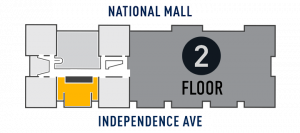This boomerang, an example of the "first aerodynamic shape conceived by man," was presented in 1969 to NASA astronaut Michael Collins by the Australian Television Network Channel 7 in celebration of the success of the Apollo 11 Moon landing that July. After Apollo 11, Collins, the command module pilot, and his two crewmates, the first moonwalkers Neil Armstrong and Buzz Aldrin, embarked on a 45-day world tour. Commemorative items like this one, prepared by organizations, companies, or nations, provided a tangible demonstration of the enthusiasm for the first Moon landing.
Collins, later the director of the National Air and Space Museum and an undersecretary of the Smithsonian Instituion, gave the boomerang to the National Collection in 1986.
Display Status
This object is on display in Destination Moon at the National Air and Space Museum in Washington, DC.

Object Details
Country of Origin
Australia
Type
AWARDS-Miscellaneous
Dimensions
3-D: 76.2 × 7.6cm, 0.5kg (2 ft. 6 in. × 3 in., 1lb.)
Materials
Wood with metal citation plate
Inventory Number
A19870014000
Credit Line
Gift of Michael Collins
Data Source
National Air and Space Museum
Restrictions & Rights
Open Access (CCO)
For more information, visit the Smithsonians Terms of Use.

